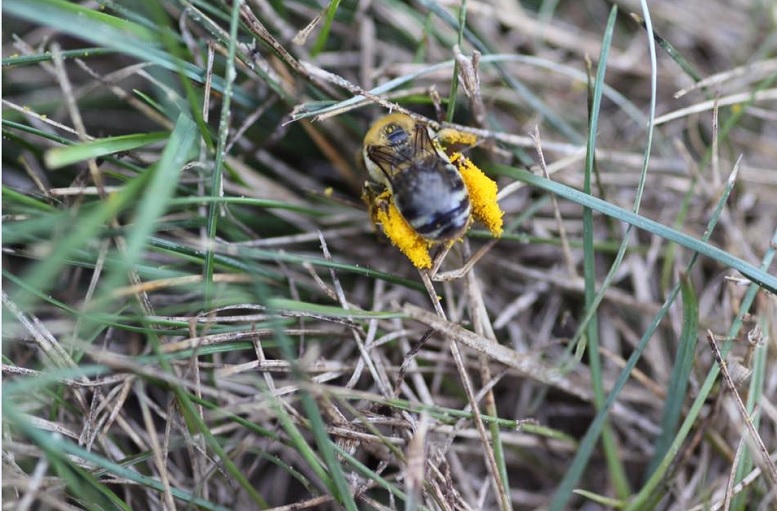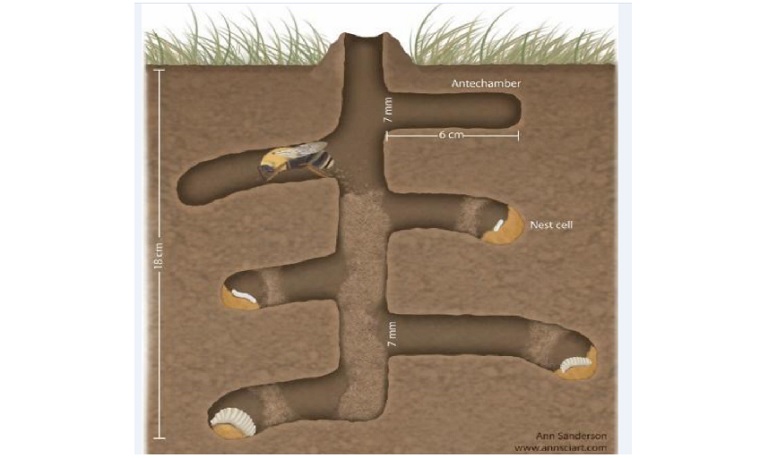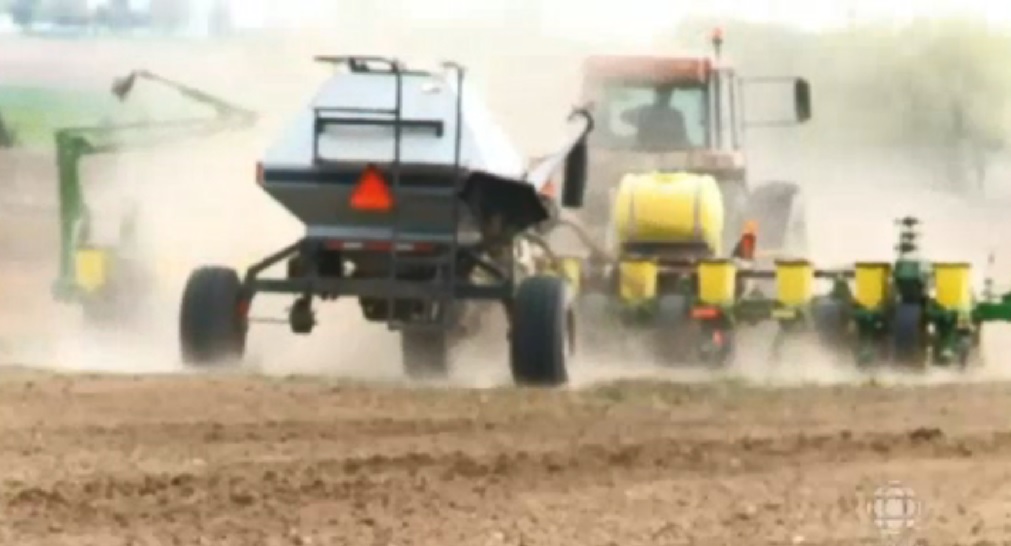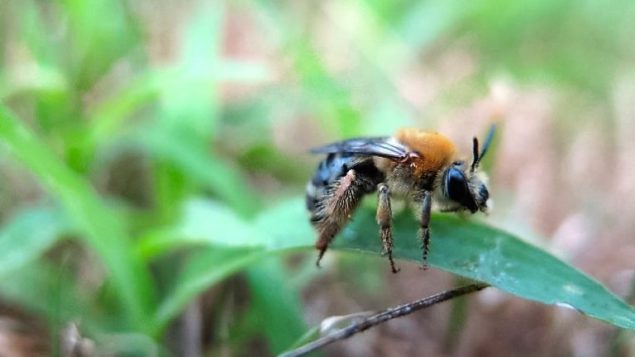Neonicotinoids, one of the most popular insecticides in agricultural use worldwide, has often been claimed as a major factor in commercial bee colony collapse.
The vast majority of research has focussed on “neonics” and honeybees, as they nest in colonies and are easy to study. But most of the 900 species of bees in Canada are wild bees, many living relatively solitary lives and ground dwelling.
A new study from the University of Guelph involved the ground dwelling hoary squash bee, a species that feeds on the nectar from squash, pumpkin, gourds, melons and similar crops. This wild bee is a critical pollinator for the crops.

A hoary squash bee going into her underground nest with a full load of pumpkin pollen on her back legs (Susan Chan- U of Guelph)
The soil study which took place in several commercial squash fields in Ontario, found alarmingly high concentrations of neonics, a neuro-toxin, in the soil where the squash bee makes its nest.
The female digs tunnels into the soil where it sleeps and lays its eggs on top of deposits of pollen and nectar which developing larvae feed on.

Example of the squash bee underground nest (Ann Sanderson,- Chan et al, , U of G)
Neonics are either applied directly as seed coatings, but can also be sprayed on soil during planting to combat pests such as the cucumber beetle. A portion of the toxin is absorbed right into the plant itself, while the rest remains in the soil or is washed into watersheds.
The particular family of pesticides have been banned in the U.S for new uses and the E.U. has imposed a moratorium, while Health Canada is currently reviewing their use and expects to make a decision on their use later this year.

2013: A farmer in southern Ontario plants field corn coated with neonicotinoids. It is believed the dust from planting carries the toxin far from the field onto other plants, the soil, and water. Photo: CBC video
University of Guelph School of Environmental Sciences professor, Nigel Raine, who holds the Rebanks Family Chair in Pollinator Conservation worked on the study with PhD student and lead author Susan Chan. Quoted in a U of G press story he said, “Current risk assessments for insecticide impacts on pollinators revolve around honeybees, a species that rarely comes into contact with soil. However, the majority of bee species live most of their life in soil, so risks of pesticide exposure from soil should be a major factor in these important regulatory decisions.”
As such the study suggests, not only may the bees be exposed to the chemical through pollen, but likely through contact with the chemical in the soil. A future study intends to look at how much of the toxins are absorbed by the bees through contact with the soil.
The researchers using a conservative estimate the risk of lethal exposure to the bees is still more than double the accepted threshold of five per cent.
Additional information
- University of Guelph: Aug 26/19: Wild ground nesting bees may be exposed to lethal pesticides in soil
- Canadian Press (via Global News): L Casey: pollinating bees may be exposed to lethal dose of neonics in soil.
- BioRxIV: Chan et al: Assessment of risk to hoary squash bees (Peponapis pruinosa) and other ground-nesting bees from systemic insecticides in agricultural soil







For reasons beyond our control, and for an undetermined period of time, our comment section is now closed. However, our social networks remain open to your contributions.